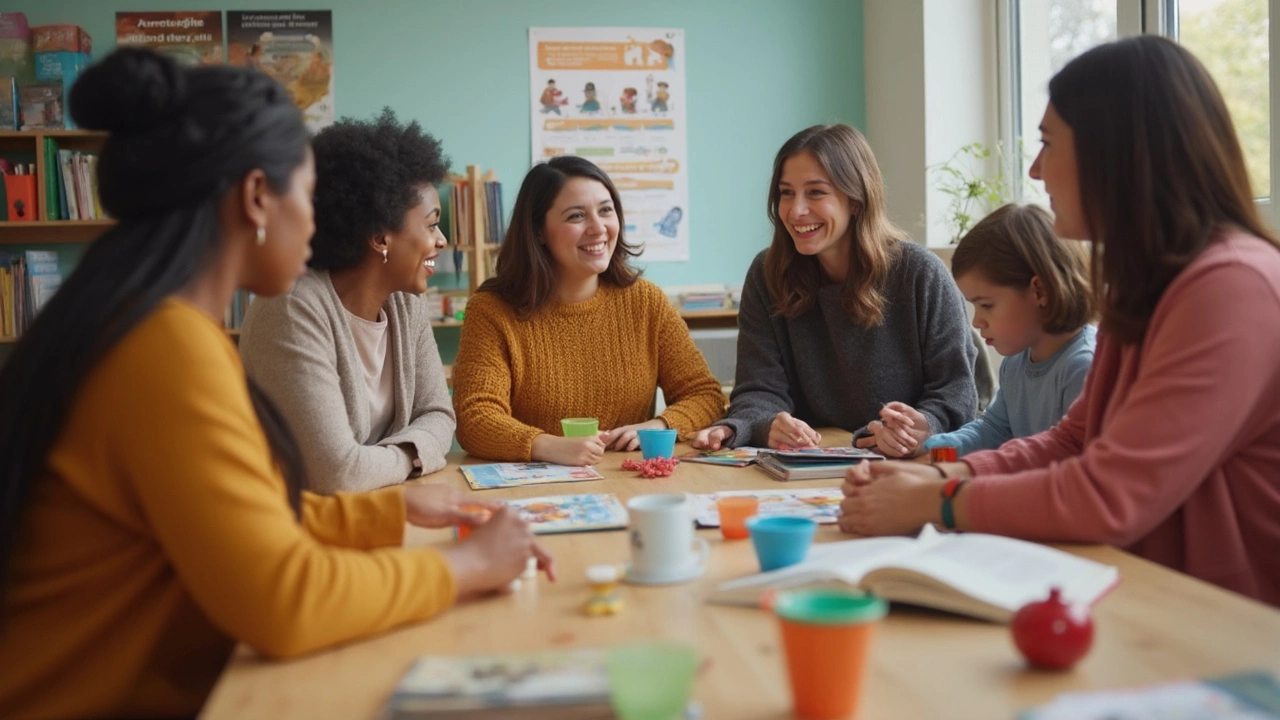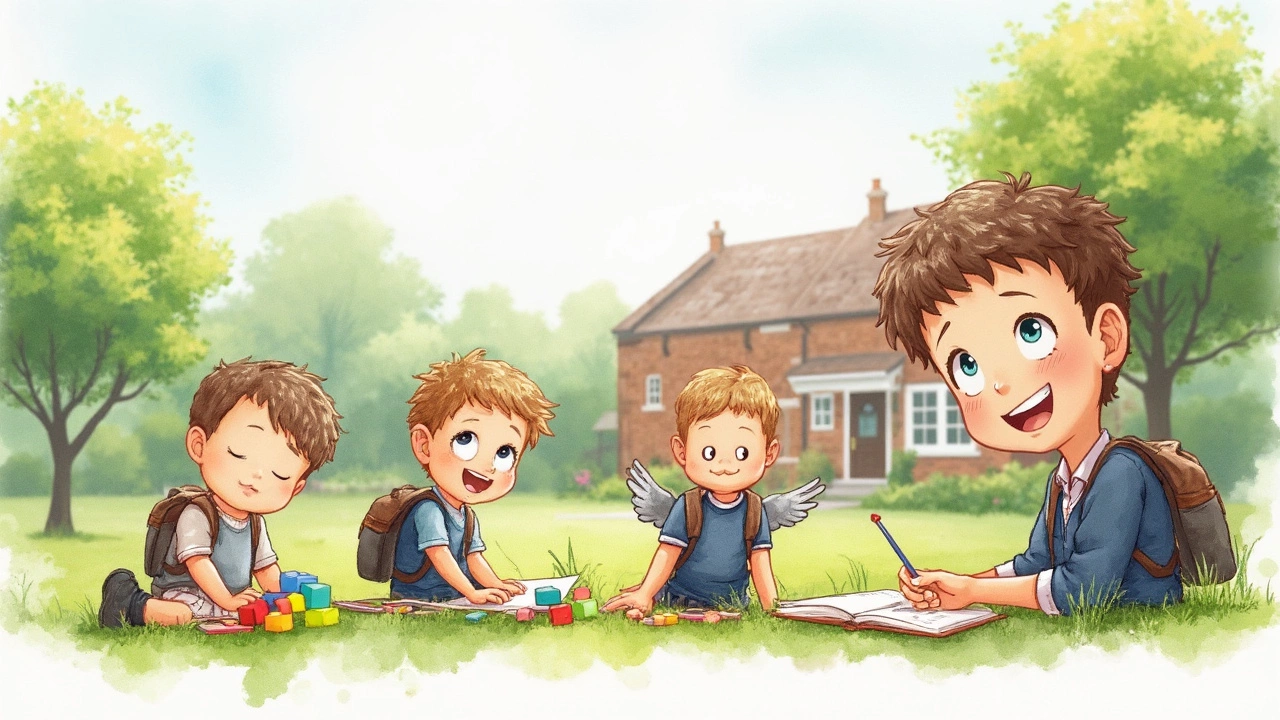Did you know a child’s brain develops faster in the first five years than at any other point in life? Imagine what could happen if we get those early years right. Early years education isn’t just coloring and building blocks—it’s the secret sauce for the rest of your life. Some of the most important building happens before kids even realize they’re learning. What does it really mean though, and why does it matter so much?
The Heart of Early Years Education
Early years education refers to the learning and care that children receive from birth to about age five, before formal schooling starts. This isn’t babysitting. It’s the foundation that shapes social, emotional, and cognitive growth. Kids aren’t just memorizing their ABCs—they’re learning how to share, express feelings, handle frustration, and build friendships. Imagine a toddler’s world: every sound, texture, and smile is new. In these key years, brains light up like fireworks with every sensory input.
Neuroscientists tell us that by age three, a child’s brain has already formed more than a thousand trillion connections, more than they’ll ever need. Harvard’s Center on the Developing Child has shown that nurturing, responsive interactions—think a parent singing to a baby or a teacher responding to a curious question—literally shape brain architecture. Neglect or stress at this stage can set off a negative chain reaction that’s hard to reverse.
So what’s going on in early years classrooms? You’ll see circle time stories, messy art, counting songs, and dramatic play—all carefully chosen to strengthen social skills, language, memory, and coordination. And even outside of formal preschool, everyday routines with caring adults—like cooking meals, sorting laundry by color, or naming street signs on a walk—make a world of difference.
There’s a level of magic in watching toddlers learn empathy and confidence from the simplest activities. Say a three-year-old helps a friend up after a fall, or uses words instead of a tantrum—it’s a massive leap in their social-emotional growth. These skills set kids up for much more than school readiness. They’re practicing how to be people.
The flexible, nurturing environment of early years settings means mistakes aren’t punished. Instead, kids are shown how to bounce back, try again, and learn new ways. This type of encouragement builds what psychologists call a “growth mindset”—a belief that ability can be developed with effort. This mindset has been linked to resilience and higher achievement, years down the line.
And let’s not forget about play. Research from the LEGO Foundation and the OECD found children who learn through play score higher in problem solving, science, and self-regulation. Through play, they experiment, negotiate rules, and imagine new realities—all skills needed in adult life.
It’s wild to realize early years education isn’t one-size-fits-all. Some programs center on play, like Montessori or Reggio Emilia; others blend teacher guidance and child-led exploration. But the core remains: encouragement, exploration, and connection.

How Early Years Shape the Rest of Life
Here’s the kicker: kids who get a strong start in early years education are set up for actual, measurable success years later. In 2011, Nobel Prize winner James Heckman showed that high-quality early childhood programs deliver a 13% return on investment each year, thanks to better health, higher earnings, and less need for special education. The famous Perry Preschool and Abecedarian studies tracked kids for decades and found those who had early education did better in school, were less likely to be arrested, and even lived longer, healthier lives.
So, it’s not just about reading earlier or learning to count to 100. It’s about building brains, hearts, and habits that last. For families, early education gives children stronger attention spans, greater language skills, and emotional self-control. How dramatic is the impact? Consider this: according to UNICEF, children who attend at least one year of preschool are far more likely to succeed in primary school. Without early education, gaps in language and social development become chasms—especially among kids from less advantaged backgrounds.
Quality matters here. Not all early years settings are equal. Key ingredients include low child-to-adult ratios, trained staff, rich and varied activities, regular family involvement, and a focus on well-being over 'academic' pressure. If you’re looking for the right spot for your child, look for settings where children are listened to, not just taught at. Watch for laughter, curiosity, and kindness in action. Great programs adapt to each kid, understanding some children need more structure, while others thrive in open-ended play.
Let’s zoom out for a second. On a national scale, investing in the early years protects against future costs for healthcare, welfare, and crime. The World Bank claims boosting preschool enrollment increases GDP per capita, because children enter the workforce better prepared, both mentally and physically. Singapore and Finland—two countries with world-beating school systems—put big emphasis on caring, well-rounded early learning experiences, not just early academics.
The early years aren’t just preparatory; they are precious in their own right. This time is about wonder, discovering who you are, how to ask big questions, and how to bounce back from mistakes. Instead of cramming knowledge, we’re building identities and values that stick. Kids learn grit and kindness from digging in the mud, group projects, and simple chores, not from endless worksheets.
If you’re a parent or carer, you’re not just finding someone to 'watch' your kids while you work. Early years educators are co-architects of a child’s brain, helping mold emotional security as much as math skills. They cheer on tiny victories—a first scribbled letter, a brave apology, the patience to listen to a friend. Every high-five matters.

Practical Tips and Powerful Stats About Early Years Education
Ready for some real-world tips? If you’re not sure how to support your child’s early learning at home, don’t stress. You don’t need a fancy curriculum. Daily life is full of teachable moments. Chat with your child while you cook; just talking exposes kids to more words, growing their vocabulary. A well-known study by Hart and Risley in the 1990s showed children who heard more words at home entered school far ahead of their peers.
Storytime isn’t about perfect pronunciation. It’s about sharing stories, noticing the pictures, and asking 'What happens next?' Sing together, ask silly questions, play pretend games—even fifteen minutes a day makes a difference. If your toddler gets lost in play, let them linger. That stretch of deep concentration is building focus, creativity, and confidence.
For those who want to keep it simple, here are quick activities that spark learning:
- Sort laundry by color or size—teaches sorting, pairing, and attention to detail.
- Have an indoor 'picnic' and let your child help set up—boosts planning and social skills.
- Dance to favorite songs—grows rhythm and motor coordination.
- Count steps while walking—makes math fun (without flashcards).
- Ask your child to guess what comes next in a story—flexes prediction and imagination.
Worried about screen time? The American Academy of Pediatrics recommends limiting passive screen use for children under two and focusing on interactive content for older toddlers. The best learning still happens face to face—with a caring adult who tunes in, responds, and celebrates curiosity.
Quality preschool and nursery settings do more than prepare kids for academics. They improve health, lower stress levels, and reduce social inequality. Take a look at some fascinating stats in the table below:
| Fact | Source |
|---|---|
| Children with strong early education reach higher literacy and numeracy levels at age 15 | OECD, 2017 |
| Preschool attendance can improve social skills by up to 17% | Education Policy Institute, 2019 |
| Low-income children seeing high-quality preschool are 25% more likely to graduate high school | Perry Preschool Study |
| Early years education provides up to $7 return for every $1 invested | Heckman Equation, 2011 |
| Children with strong early social-emotional skills have less risky behavior by age 21 | Harvard University, 2016 |
Some countries, like Norway and Sweden, make early childhood education available to all as a right, recognizing how vital those early years are. Meanwhile, the United States, UK, and Australia are debating how to increase access for all families, making sure high-quality preschool isn’t just for the wealthy.
Early years education is much more than learning letters and numbers—it's about shaping brains and hearts for life. Next time you see a group of preschoolers building a tower or comforting a sad friend, remember: that's the future being built, one sticky handprint and giggle at a time. It’s simple, but it matters more than most people realize. And whether you’re a parent, grandparent, teacher, or neighbor, your presence and encouragement could make all the difference in those first few remarkable years.

